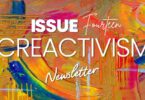1. CANDIDATES – This slate of candidates included a slew of people who are as varied as the country when it comes to ethnicity, gender, and even religion. They include Marco Rubio and Ted Cruz (Hispanic), Ben Carson (Black), Bobby Jindal (Indian-American), Hillary Clinton and Carly Fiorina (Women), and Bernie Sanders (Jewish).
2. VOTERS – This election will have the most racially and ethnically diverse voting population in U.S. history. Specifically, 31% will be a minority (Hispanic, Black, Asian, or a mix of them). There are nearly 70 million eligible minority voters, and their growth far outpaces that of White Non-Hispanic voters (more than two-thirds of net growth in the U.S. electorate during this time has come from racial and ethnical minorities, and these demographic shifts are projected to continue).
If these demographic trends aren’t enough to pay more attention to minorities, also consider the fact that there’s an overwhelming amount of naturalization applications currently taking place (estimates suggest that there are over one million applications this year alone). Minorities feel there’s too much skin in the game this time around, and want their voices heard come November. There are over 8.8 million legal residents eligible to naturalize, many of whom are Mexican. They’ve had a legal resident status for many years, but until recently didn’t feel the need to follow the naturalization process. Some wanted to avoid the high fees that came with the process, were afraid of the test, or thought that their English wasn’t good enough, etc.
The minority voter will have a very strong presence in the ballots this year, and their influence can be as great or greater than it was in 2008 and 2012.
Although we know diversity and the changing composition of the American population is a key theme in the 2016 elections, it has also been a key theme in culture, entertainment, and marketing for quite some time, and especially since the 2010 Census. The numbers are irrefutable. If you’re not exploring how to win with multicultural audiences, you’re missing out on an enormous share of current and potential customers and/or voters, and on the outsize growth of these constituencies. Companies (or politicians) that understand these diverse audiences and can identify their passion points to craft the right message will have a leg up on their competition every time.
Learn more about how the rising Latino voters are driving a new Political Marketing Age, and how you can reach a more diverse audience by following Dieste Inc., a multicultural advertising agency located in Dallas, Texas and New York. Also, be sure to subscribe to Provoke Weekly and stay up to date on the latest trends in multicultural marketing.











